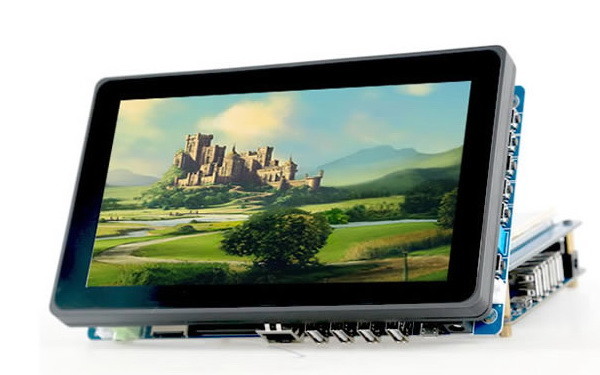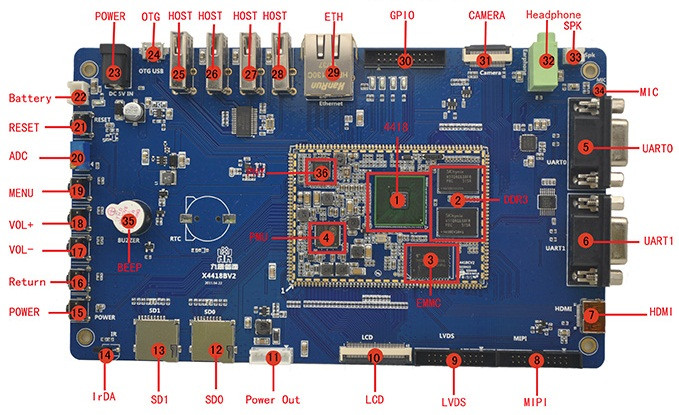For some reasons, Samsung S5P4418 and S5P6818 quad and eight Cortex A53 core processors – likely made by Nexell – have been quite popular with embedded systems companies based in China. So after Graperain, Boardcon, and FriendlyARM, there’s at least one another company offering solutions with either processor, as sModule, a subsidiary of CoreWind, has now launched systems-on-module, single board computers, and development kits with the 64-bit ARM SoCs. In this post, I’ll cover one of their development kit including their CORE6818 CPU module, a baseboard, and an optional 7″ capacitive touch display..
 sModule SBC-x6818 development kit specifications:
sModule SBC-x6818 development kit specifications:
- CORE6818 CPU module
- SoC – Samsung S5P6818 octa-core ARM Cortex A53 processor @ 1.4 to 1.6 GHz with Mali-400MP 3D GPU
- System Memory – 1GB DDR3 (2GB optional)
- Storage – 8GB eMMC Flash (4 & 16GB optional)
- Ethernet – Realtek RTL8211E Gigabit Ethernet transceiver
- 180-pin “interface” to baseboard
- Power Supply – 3.7 to 5.5V DC input; 3.3V / 4.2V DC output; AXP228 PMIC
- Dimensions – 68 x 48 x 3 mm (8-layer PCB)
- Temperature range – -10 to 70 deg. C
- SBC-x6818 Baseboard
- Storage – 2x micro SD card slots
- Video Output / Display I/F – 1x HDMI up to 1080p30, LCD, 20-pin LVDS, and 20-pin MIPI DSI interfaces; optional 7″ capacitive touch screen (1024×768 resolution)
- Audio – HDMI, and 3.5mm headphone jack, speaker header, built-in microphone
- Connectivity – Gigabit Ethernet
- USB – 4x USB 2.0 host ports, 1x mini (micro?) USB OTG port
- Camera – 1x 20-pin camera interface
- Expansion
- “GPIO” header with ADC, UART, SPI, SPDIF, and GPIOs
- ADC terminal block
- Serial – 2x DB9 UART interfaces, 2x UART headers
- Misc – IR receiver; power, menu, volume, and return buttons; RTC with battery (not populated?); PWM buzzer; boot selector: eMMC, SD card, or USB (with fastboot?)
- Power
- 5V/2A DC via power barrel;
- Power out header with 12V, 3.3V, and GND
- 2-pin battery header for 4.2V lithium battery
- Dimensions – 185 x 110 mm
The company provides Android 4.4, Ubuntu 12.04, and Linux 3.5 + qt 5.0 for the board. As with other boards based on Samsung/Nexell S5P processors, don’t expect software updates for the firmware, so if you need security patchsets or the latest kernel features this won’t work for you. You can find a few details about the hardware on the Wiki.
While other companies kept their price secret, sModule published prices for all their modules and boards, and even allow you to purchase them by PayPal or bank transfer. Their CORE4418 module starts at $49, while the development kit above goes for $119 with the touch screen, and $109 without. The more compact iBOX6818 single board computer – they call it card computer – with 2GB RAM goes for $75. More details can be found on sModule products page.

Jean-Luc started CNX Software in 2010 as a part-time endeavor, before quitting his job as a software engineering manager, and starting to write daily news, and reviews full time later in 2011.
Support CNX Software! Donate via cryptocurrencies, become a Patron on Patreon, or purchase goods on Amazon or Aliexpress





